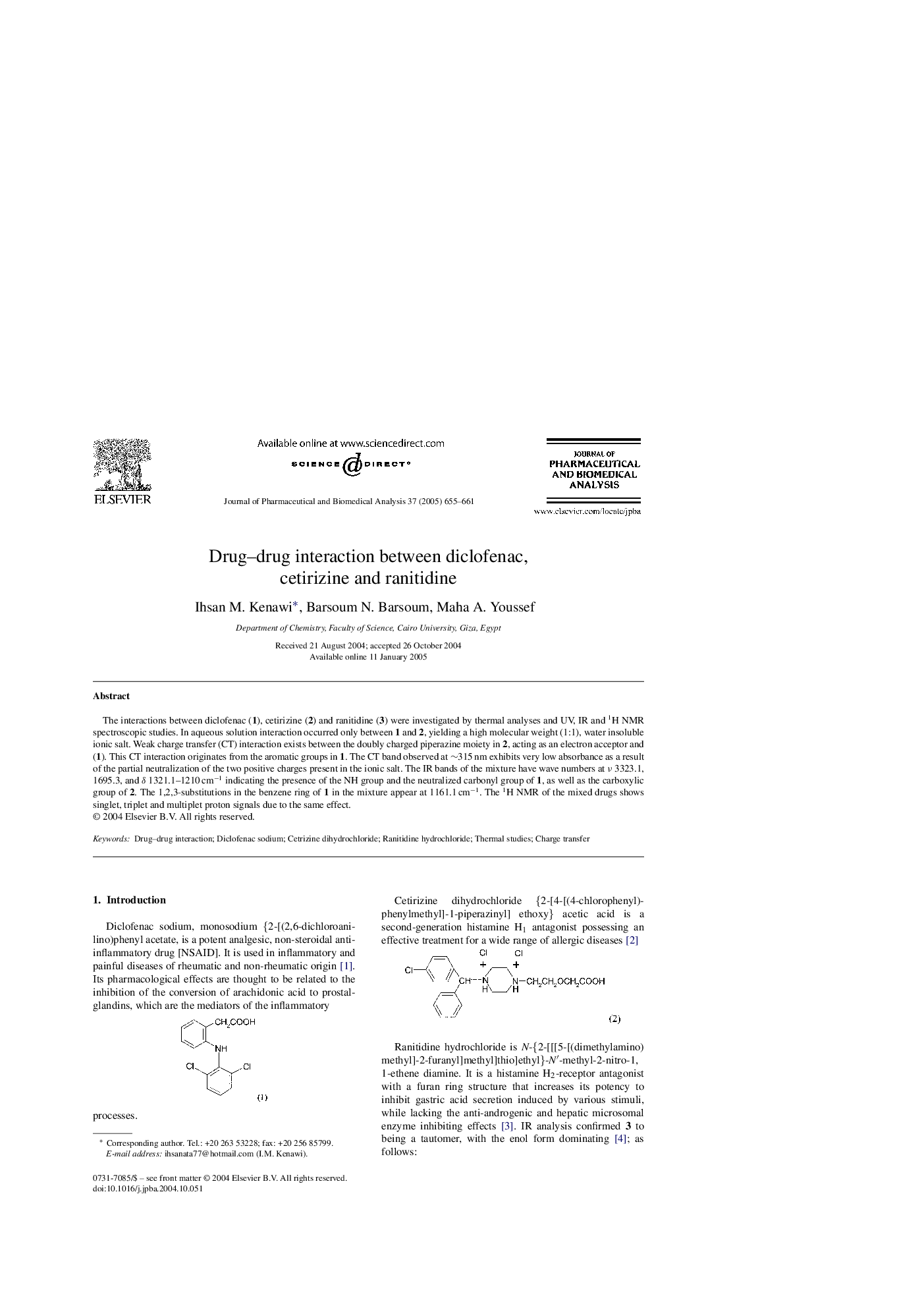| Article ID | Journal | Published Year | Pages | File Type |
|---|---|---|---|---|
| 10554444 | Journal of Pharmaceutical and Biomedical Analysis | 2005 | 7 Pages |
Abstract
The interactions between diclofenac (1), cetirizine (2) and ranitidine (3) were investigated by thermal analyses and UV, IR and 1H NMR spectroscopic studies. In aqueous solution interaction occurred only between 1 and 2, yielding a high molecular weight (1:1), water insoluble ionic salt. Weak charge transfer (CT) interaction exists between the doubly charged piperazine moiety in 2, acting as an electron acceptor and (1). This CT interaction originates from the aromatic groups in 1. The CT band observed at â¼315 nm exhibits very low absorbance as a result of the partial neutralization of the two positive charges present in the ionic salt. The IR bands of the mixture have wave numbers at ν 3323.1, 1695.3, and δ 1321.1-1210 cmâ1 indicating the presence of the NH group and the neutralized carbonyl group of 1, as well as the carboxylic group of 2. The 1,2,3-substitutions in the benzene ring of 1 in the mixture appear at 1161.1 cmâ1. The 1H NMR of the mixed drugs shows singlet, triplet and multiplet proton signals due to the same effect.
Keywords
Related Topics
Physical Sciences and Engineering
Chemistry
Analytical Chemistry
Authors
Ihsan M. Kenawi, Barsoum N. Barsoum, Maha A. Youssef,
